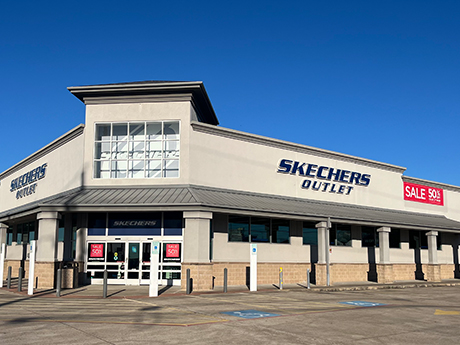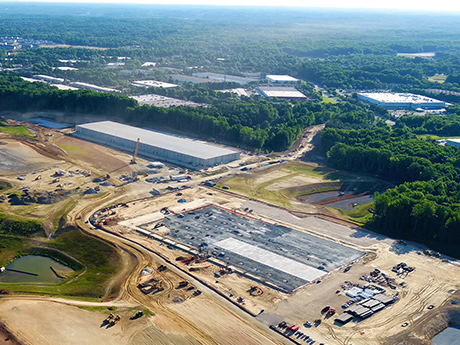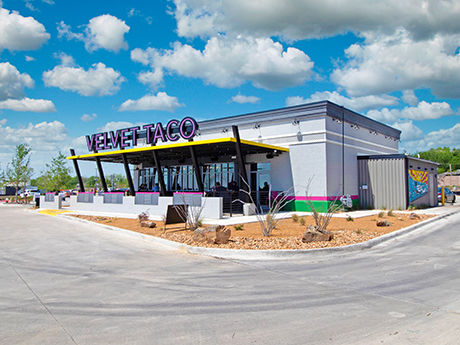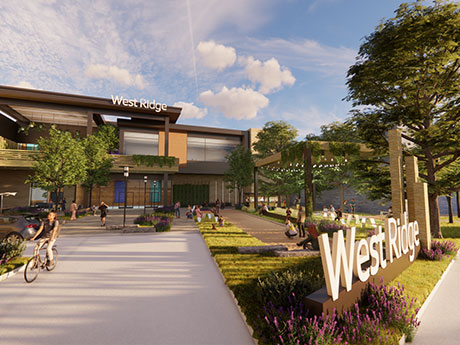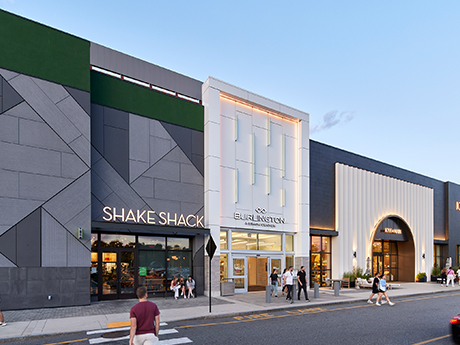By Jason Baker, principal at Baker Katz If you look back about 150 years or so, drugstores have played a big role in communities nationally and across Texas. From the beginning with small corner pharmacies to today’s large retail chains with 24-hour service, drive-thrus and a wide range of products, drugstores have filled retail and service needs in the communities they serve. However, in the past few decades, there has been a noticeable shift. In the 1980s and 1990s, national chains such as Walgreens and CVS expanded rapidly, often setting up stores at the exact same intersection. These stores became go-to spots for everything from prescriptions to film processing to everyday essentials and necessities. However, their fast-paced growth also came with its own set of challenges, such as high costs of real estate and operational expenses that left the underlying real estate of many of the drugstores vulnerable when market conditions changed. Shifting Consumer Behaviors Force Adaptation Over the past two decades, consumer behavior has changed significantly. With the rise of telehealth, people can now see a doctor on Zoom and get a prescription without ever leaving their home. At the same time, online giants and big-box retailers have also …
Market Reports
— By Patti Dillon, Executive Vice President, Colliers — Las Vegas’ office market is at a critical juncture as shifting dynamics could shape its future for years to come. New developments like the anticipated 30-acre studios development project in discussion with Howard Hughes Corporation present opportunities, though second-generation office space is expected to dominate over the next three to five years. This shift is driven by cost efficiency, evolving tenant demands and the higher expenses tied to new construction. Though new builds offer state-of-the-art facilities, the adaptability and affordability of second-generation spaces make them a practical solution for many businesses. Las Vegas continues to attract high-profile corporate tenants from out of state. These companies are drawn to flexible office spaces that feature modern technology and proximity to mixed-use developments that support the evolving hybrid work model. The increasing demand for live-work-play environments has placed a premium on mixed-use developments that combine residential, office and retail spaces. Despite ongoing demand, the market faces significant challenges. Investor confidence has been impacted by broader economic factors, including the U.S. elections, geopolitical tensions and inflationary pressures. Supply chain disruptions, rising construction costs and higher interest rates also create barriers for developers and limit financing options …
Resilient DC Industrial Market Is Growing But Softening as Vacancy Rates Creep Higher
by John Nelson
The U.S. industrial real estate market continues to sustain, with national vacancy rates steadily creeping toward 7 percent (6.8 percent at the time of this writing). Over the past three years, the industrial real estate market continued to set records and became known as the darling asset class within the commercial real estate community. However, the market is showing signs of reversion to historical velocity and vacancy rates. The industrial vacancy rate is steadily climbing in the Washington, D.C., metro area as demand softens for third-party logistics in second-quarter 2024. Vacancies are up to 6.5 percent after reaching an all-time low of 3.8 percent at the end of 2022. The market remains tight by historical measures. However, normalized leasing velocity, a few large tenant moveouts and reduced demand is expected to provide upward pressure on the vacancy rate in 2025. Subleasing activity trended upward in the past six to 12 months to over 1.3 million square feet. A few examples of large sublets include 393,000 square feet put on the market at Capital Gateway in Brandywine; Builders First Source moved out of 135,000 square feet at Plaza 500 in Alexandria; and in the second quarter, Western Express vacated 102,000 square …
By Taylor Williams “The greatest victory is one that doesn’t require a battle.” Ancient Chinese military strategist Sun Tzu penned that line as part of The Art of War, but in applying the expression to the (almost) equally cutthroat business of developing and investing in retail real estate, there is some wisdom to be gleaned. In simple terms, sometimes the best decision, at least temporarily, is to do nothing. Passivity does not come easily to commercial builders and buyers. Where their investors are concerned, these companies often have strict timelines for deployment of funds and even stricter benchmarks for guaranteed returns. When market conditions are favorable, these groups are pressured to maximize growth, in terms of both direct mandates from shareholders and indirect obligations via competitors being aggressive in the market. For better or worse, the market sentiments surrounding real estate development and investment embody classic principles of capitalism, and that’s unlikely to ever change. But if there is one thing developers, investors, lenders and operators across all asset classes can likely agree on, it’s that market conditions in 2024 have not been favorable. Yet the push for growth has merely slowed, not disappeared. New product must get developed to …
The multifamily market in the Washington, D.C., metro area has experienced meaningful shifts in 2024, marked by moderate demand, consistent construction and evolving investment patterns. As a major urban hub, D.C. continues to attract both local and out-of-state investors eager to tap into its growing potential. Out-of-state capital A key trend in the D.C. multifamily market is the strong influx of out-of-state capital. This year, 44 percent of buyers in our DMV (D.C., Maryland and Virginia) listings came from outside the region, drawn by the area’s stability and long-term growth potential. These out-of-market investors often pay a premium over local buyers, keeping deal volume and pricing competitive even amid rising interest rates. This steady inflow of external capital has reinforced the market’s resilience, underscoring the perceived value of D.C. multifamily assets. The demand from out-of-state investors has also provided stability to the market, helping to sustain price levels and liquidity despite macroeconomic headwinds. By bolstering interest in multifamily properties, this capital flow supports continued growth and positions D.C. as a desirable destination for long-term investment. As this trend persists, the D.C. metro area is likely to remain a focal point for diverse capital sources, ensuring strength and adaptability in its …
Atlanta remains one of the most desirable markets in the country for investors due to its diverse economy, below-national average unemployment rate, steady increase in jobs and population growth. These market fundamentals have translated to a well-performing multifamily market that, despite short-term macro challenges, is in a unique favorable position due to its relatively low supply compared to other peer Sunbelt markets. Demand for multifamily has seen a rebound in 2024 and Atlanta has been resilient in the middle of a multi-year supply wave. Over the past two years, the market delivered approximately 35,000 units and that number is expected to drop to just 9,000 units in 2025 and less than 4,000 units in 2026. This will lead to tightening occupancies and strong rent growth. The city has already recorded its seventh consecutive quarter of net positive net absorption as of the second quarter of 2024, which is a quarterly high since mid-2021 at 5,799 units. New development, on the other hand, has been a bit more challenging due to the higher return on cost requirements, flat rent growth and a lack of meaningful relief on construction costs. Market valuations for newly constructed assets are near current replacement cost, which …
— By Patrick Dempsey, senior managing director of JLL Capital Markets — The Phoenix retail capital markets environment is showing signs of resilience in the face of current economic conditions. While the market has experienced a period of lower transaction volume, recent drops in interest rates have begun to bridge the gap between buyer and seller expectations, potentially paving the way for increased activity. Notably, Phoenix stands out with impressive positive rent growth, recording the highest rate at 7.4 percent among major metros and Sun Belt markets. Phoenix’s robust employment market, especially in the semiconductor sector, continues to be a major advantage. The city boasts a strong base of major employers, contributing to its ongoing economic vitality. Investor demand remains concentrated on grocery-anchored properties and premium retail locations, highlighting the enduring value of strategically positioned assets. This trend is especially pronounced in high-growth submarkets. For example, the Southeast Valley is experiencing significant suburban and residential growth, driving the development of new grocery centers to serve the expanding population. Similarly, Northwest Phoenix with areas like Peoria and Glendale are seeing strategic investments from grocers anticipating future population growth. Looking ahead, there’s increasing optimism for a stabilization of retail capital markets transactions …
By Cody Foster, Advisors Excel Topeka, the capital city of Kansas, has a population of approximately 125,000 people, located in a 12-county region with over 531,000 residents. The region’s population has grown over the past five years and is expected to increase by another 2.1 percent between 2023 and 2028. With an unemployment rate of around 3.5 percent as of mid-2024, the city’s economic outlook remains stable, providing a solid foundation for redeveloping key commercial properties — including the West Ridge Mall, the third-largest indoor shopping center in Kansas at 992,000 square feet. Since it opened in 1988, the West Ridge Mall has been a significant part of the city’s commercial landscape. The site features ample parking and anchors the Wanamaker Road commercial corridor, the region’s most significant retail hub, which garnered $1 billion in retail, grocery and dining spending during the past 12 months. However, like many malls nationwide, it faces challenges in a rapidly evolving retail environment. Retail trends: following consumer behavior The West Ridge Mall has seen a steady decline in business and occupancy over the last decade. Anchor stores Macy’s and Sears closed in 2012 and 2018, respectively. Various management companies tried to keep the retail …
By Hayden Spiess Though uncertainty — economic, political and otherwise — has been a theme of 2024, retail real estate markets throughout the Northeast have proven itself reliably strong. Even certain headwinds like high construction costs and minimal quality space to accommodate growth have ultimately helped fuel robust fundamentals throughout the region. Now, brokers, investors and developers in those markets are looking ahead with optimism and faith in persisting tailwinds. Quality Space Shortage Vacant retail space in Northeast markets has been hard to come by this year, and professionals in the region aren’t expecting that to change anytime soon. The equation, they say, is simple. While retailers’ appetite for expansion has remained healthy, new construction and deliveries have been very limited. “Almost nothing has been built in the past 10 years,” says Dan Zelson, principal with Charter Realty. “There’s really just very little new product.” Steve Gillman, partner at The Shopping Center Group (TSCG), notes that while some smaller, single-tenant buildings may still be coming on line, “nobody is building a big strip center with 100,000 square feet.” “There’s that imbalance of supply and demand: demand by the retailer and lack of supply of space,” adds Daniel Taub, senior …
Atlanta’s office market feels like a story of winners and losers. Tenants continue to pay increasing rents for the best located, highest-quality spaces while the sector overall experiences negative office absorption. Those big, shiny objects, so to speak, offer quite a contrast to the results of continued office sector adversity brought on by reduced office attendance, a downsizing leasing trend and swelling sublet space. Who’s in the best position to win? Well-capitalized owners with stabilized debt (or none) that can meet the increasing tenant demands for skyrocketing tenant improvement costs and other rental concessions. With continued construction cost increases and downward pressure on base rental rates, fiscally sound landlords with longer-term business plans are in the best position to transact. And, of course, the newest buildings with the best location, amenity package and a reasonable commute for the majority of the workforce continue to thrive. CoStar Group reports that during the past 12 months, net absorption in office buildings completed before 2020 was negative 4 million square feet compared to 1.1 million for newer properties. The Atlanta office market has produced some sizable transactions this year, fueling some optimism among landlords with larger blocks of space for lease. The most …


